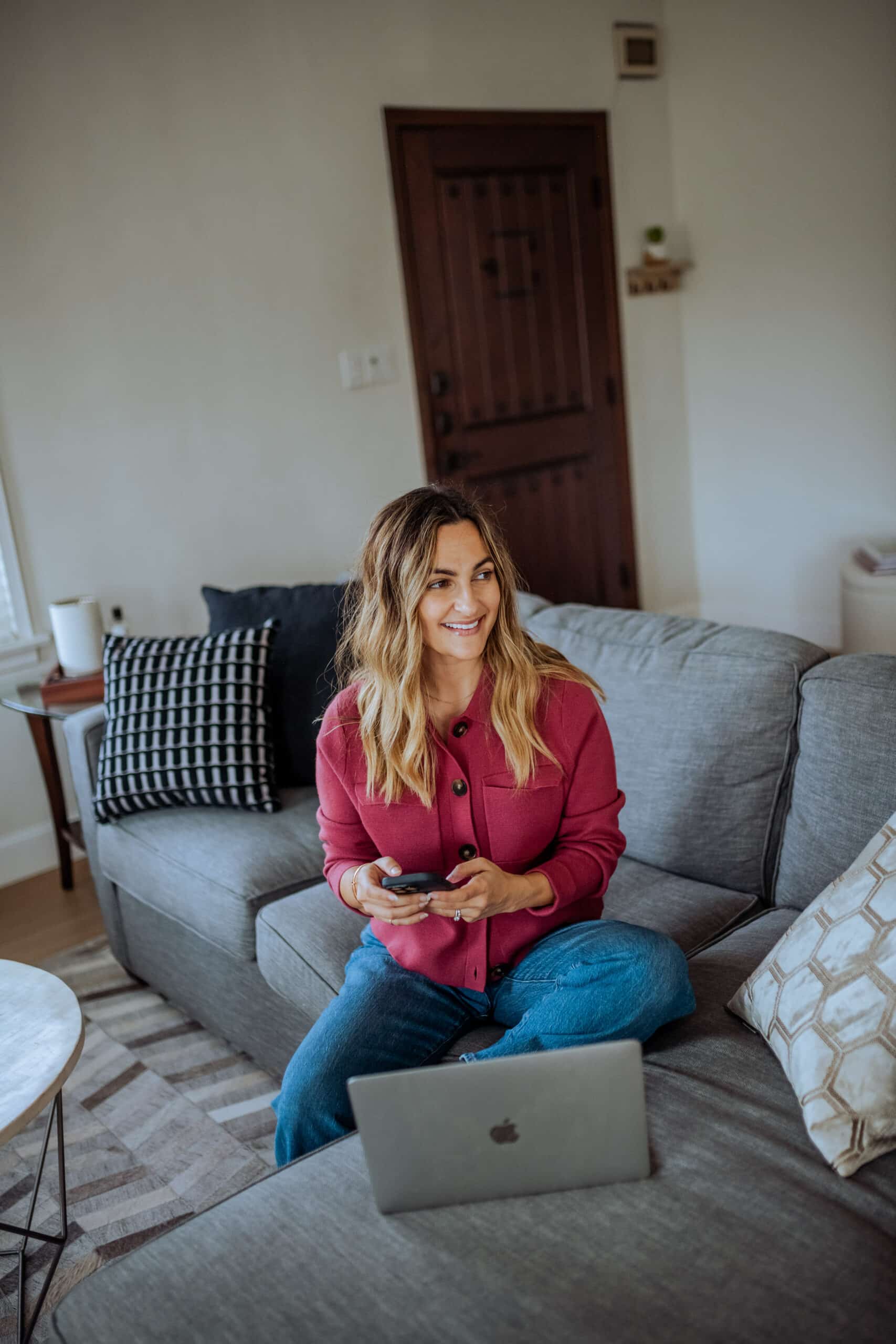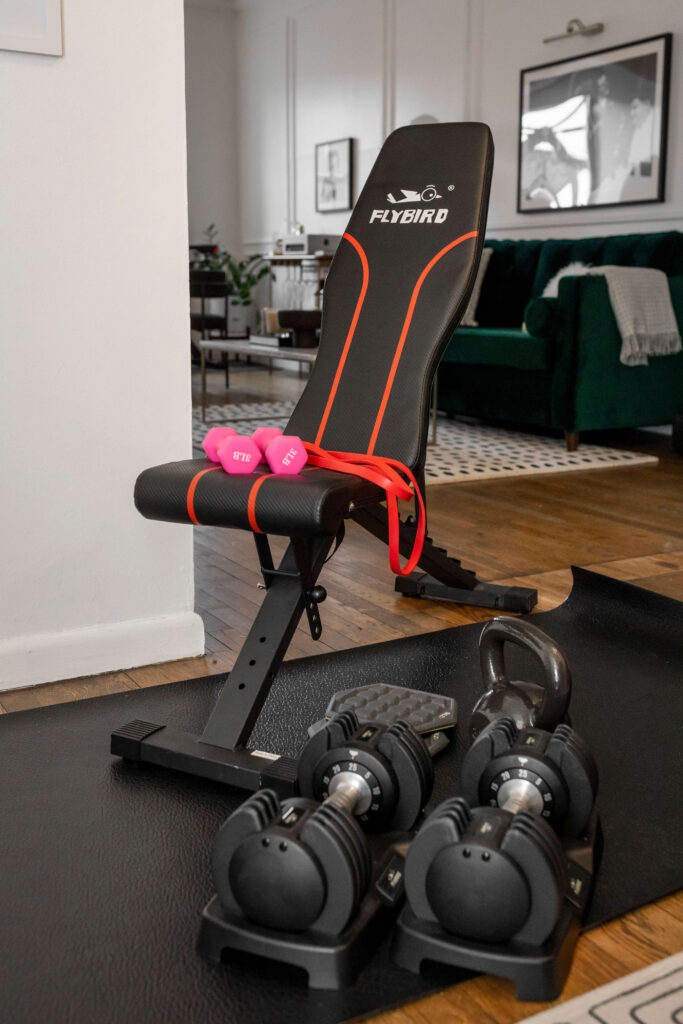Whether you work in the home or at an office, and regardless of your profession, productivity is always a hot topic.
However, productivity doesn’t mean powering through endless to-do lists or running on a single hour of sleep in order to “do the most.” Being productive isn’t just about getting things done; it’s making conscious decisions to shape a satisfying life, reach professional and personal goals, and to make the most out of our most important resource – time.
Today’s post is all about how to make the most of your time and how small changes can lead to big results for increased productivity in your day.
Establishing good habits and routines is essential to improving your productivity, leaving you feeling happily accomplished day after day.

As an entrepreneur who has worked for myself for the last several years, I’ve had to learn discipline, hone in on routines, and find ways to help myself stay on track.
Below I’m sharing 17 practical tips to help you maximize your effectiveness, be it at home or in the workplace.
Ready to embark on a journey towards a more productive you? Let’s go!
How to Have a Productive Day
Wake up Early, Even if you Don’t Have to
Waking up early provides a multitude of benefits. And if you work from home or work for yourself, this is one of my best tips for increasing productivity levels.
There’s a reason why so many of the world’s most successful people are part of The 5AM Club.
If you wake up in the morning before the majority of the world, you’re able to start your day with quiet time. This is valuable time to focus on yourself and review important tasks, meetings, and your overall schedule so you can mentally prepare for the day ahead of you.
You can get up in peace, without feeling like you have rush into the workday or office.
This time also allows you to have time for a healthy breakfast, morning routine, or workout class.
Waking up early can help you start your work day feeling prepared, already productive, and ironically, refreshed.
Establish a Morning Routine
A morning routine is something I am continually working on for myself. And on days when I’m really busy, executing my full morning routine isn’t always in the cards for me.
However, on days when I do practice a morning routine, I find that I’m more productive for the rest of the day.
Your morning routine can be as simple or as elaborate as you want it to be.
In the mornings, I’ve been using my Hatch 2 Restore to start the day. It’s a “sleep guide” machine that helps you create better bedtime and morning rituals. I use the guided morning reset, and it provides me with a few minutes to reflect and set intentions before I’m up and on my phone for work.
I also try to start my day drinking a big glass of water, making my bed, and exercise.
A morning routine can provide a sense of accomplishment, order, and satisfaction even if the rest of the day goes awry.

Make Your Bed
Make your bed when you wake up in the morning.
If you’ve heard the viral commencement speech from former Navy Seal Admiral William H. McCraven, you may be familiar with this notion.
“If you make your bed every morning, you will have accomplished the first task of the day,” he states in the speech.
“It will give you a small sense of pride, and will encourage you to do another task, and another, and another.”
This is such a simple thing, but it truly has a big impact on setting the tone for the rest of your day.
Get McRaven’s best-selling book Make Your Bed here. (It’s a personal favorite!)
Plan Ahead
A big part of having a productive day at work (and reducing stress levels!) comes from planning for it ahead of time.
As part of my Sunday reset routine, I take some time to review what I have for the upcoming week. I double check appointments and meetings; confirm plans with friends; write down any important tasks and deadlines; and prioritize a few things to start Monday morning.
Then, every evening before I log off for the day, I take a look at the next day and jot down additional tasks, meetings, and due dates that may have popped up during the day.
Doing this allows you to see your workday ahead of your workday, and mentally prepare for it before it even arrives.
This planning process takes about 15 minutes each day, and an easy way for you to “feel ahead” for the next day.

Use a Day Planner
I am a huge advocate of using a paper day planner because when you physically write things down, there’s a mind body connection that allows you to better retain information.
This, in turn, also provides you with a sense of commitment to get a written task done.
There is great satisfaction in the physical act of crossing off a task in your day planner. If you don’t believe me, try it for a day on a piece of paper.
The Day Designer daily planner in my absolute favorite planner. I’ve purchased a new one every year for the past six years.
Read my full Day Designer day planner review here.
There are several benefits to using a day planner, including:
- Better time management
- Increased organization
- Brain dump creativity
- Remembering important deadlines, meetings, etc
- Managing stress
Don’t Overload Your Day
Have you ever looked at your calendar and gotten so overwhelmed by what you need to do, that you don’t end up getting through any of it?
Don’t overload your day.
Having too many tasks not only makes you stressed, it gives you decision paralysis on where to actually begin. It can make you feel defeated before you even start your day.
Start with 3-5 actionable tasks. As you work through your day, you can always add in more.
Tackle Harder Tasks First/Prioritize Tasks
Another productivity hack is to start with your hardest or most difficult task first.
Stop randomly picking things on your list; by default, you’ll always pick the easier ones, and you’ll continue to procrastinate on the bigger, often more important things.
I also like to start difficult tasks at the start of the day when I’m refreshed and usually more focused.
Don’t start a big project at the end of the day unless you can dedicate some serious hours to it.
Don’t multi-task
This may sound counter-intuitive, but don’t multi-task. Focus on completing one task at a time so you can mentally move on to the next task and put the other behind you.
Think of is this way: it’s better to have one house project complete and still start on others, than have a lot of unfinished projects all around the house at once.
If you’re tackling a large project that takes several hours or all day, take dedicated breaks and come back to it later. These are strategic and intentional, and better than randomly of jumping back and forth between things.
Learn to Say No
Another easy way to cut down your to-do list? Learn to say no.
Obviously, there are certain work obligations that you’ll need to be a part of, but don’t be afraid to decline if you do in fact have something urgent and you’re not essential to the call or meeting.
You should also learn to say no in your social life. It’s okay to decline a Friday dinner if you’ve really wanted to start the new book or get ahead on laundry.
Try Time Blocking
Although necessary, admin tasks, checking emails, replying to emails, phone calls, and Zoom meetings can be major time killers. Jumping back and forth between all these things can interrupt your workflow and concentration.
Many productive people swear by time blocking.
Dedicate certain blocks off time throughout your day to tackle things like email, errands, admin work, invoicing, phone calls, etc.
How long you choose to spend your time on these blocks is up to you, but set a timer to hold yourself accountable and to stay on track with your day.
Schedule and Take Breaks
If you’re like me and tend to become so hyper-focused that you don’t take a break, try the Pomodoro technique.
The Pomodoro technique is a time management principle to help with productivity.
Here’s how the Pomodoro technique works:
- Choose a task and work on it for 25 minutes
- After 25 mminutes, take a short, 5-minute break
- Repeat this four times
- After the fourth time, take a longer, 15–30-minute break
- Continue as needed to finish your task or work day
These breaks provide ideal moments to rehydrate, grab a snack, or get outside for some fresh air.
When you take breaks, you allow your brain to recharge. This helps prevent burnout and can boost creativity and focus.
Spend Less Time on Your Phone
Regardless of your profession, your little screen can be a black hole and can add up to a lot of wasted time in a single day.
If you want to increase your productivity, spend less time on your phone.
Put your phone on do not disturb so that you aren’t distracted by a vibrating or ringing phone from a text or call.
Put your phone out of reach while working. This could be simply putting it behind your back, or in another room completely. I promise over time you’ll forget it’s even there.
Set time limits on social media apps. As a blogger, a large part of my job requires me to be on social media apps. But regardless of your job, social media can lead to mindless scrolling and even make you feel bad about yourself.
Allow yourself short periods of time in the morning, afternoon, and at the end of my day to go on your phone. Set an alarm, and when it goes off, you’ll know it’s time to put your phone down. You can also set social media app time limits on your phone.
Avoid Answering emails on your phone. Unless it’s something urgent, I try not to answer emails on my phone. This is because often, one thing can lead to another, and out of habit you’re likely to open Instagram or TikTok.
Schedule Personal Time
Productive days don’t always have to be work-related.
Be sure to also make time for personal time, and schedule it in just as you would for work. When something is written in your planner, you’re less likely to cancel or make adjustments.
Take time for creativity, exercise, and doctor and personal appointments.
Get Enough Sleep
A big factor in maintaining energy levels for a productive day is getting enough sleep.
The average adult needs 7 hours of sleep, consistently, in order to avoid adverse effects to mood, performance, productivity, and overall heath.

Exercise Regularly
Exercising regularly can also help maintain your energy levels.
Movement is essential to improving posture and aiding in relief of pain or stiffness from sitting.
Working out also releases endorphins, providing an instant mood boost to and overall energy to help you have a productive day.
Create an Environment that Inspires You
I’m a big believer that we are highly affected by our environment.
Whether you work from home or at an office, it’s important to make you space or desk a place that inspires you.
Add a plant on your desk to provide greenery and life. Hang a mood board or your favorite inspirational saying. Invest in color coordinating office supplies to make your desk look thoughtful and designed.
Separate Work and Live Areas
If you work from home, the productivity tip is for you.
Have a dedicated area for work and separate it as best as you can from your living space.
If you have a full room as an office, close the door at the end of the day. If you have a desk or work area that isn’t separate from your living area, put away your computer and notebooks and clear the surface.
And if your brain is always in some kind of work mode, you’ll never get a break, and over time your productivity will suffer from burnout.
And a complete change of location, like working at a coffee shop, can also help to boost productivity.








